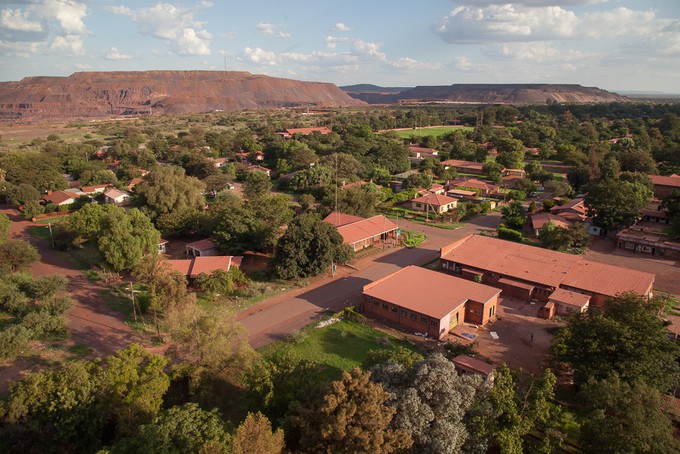25 families take stand against mining giant
“Kumba wants everyone’s house … I’ve got my title deed”
The streets in Dingleton are deserted, except for the occasional stray cat that emerges from the overgrown shrubbery, scuttling back into the bushes at the sight of a car.
Homes lie empty – their doors ajar or ripped from their hinges, electrical wires protruding from the walls, the floors littered with shards of glass and household items discarded in the move to Siyathemba, 25km away. Enormous potholes mar the roads.
The businesses that once served the community have long since closed, and residents must travel to Siyathemba to buy groceries. The clinic is still running, but no-one knows for how long.
The school, the community hall, and the hostel have all been abandoned – their replacements already built in Siyathemba.
Until 13 January, a school bus collected the remaining Dingleton children and took them to their new school in Siyathemba. But the transport contract expired at the end of 2016, when the last residents of Dingleton were supposed to have moved out.
Siyathemba, meaning “We Trust” in isiXhosa, is the “new Dingleton”, built by Kumba Iron Ore on the outskirts of the little town of Kathu. This is where the residents of Dingleton are to be moved, so that Kumba can extend the Sishen iron mine.
Kumba, a subsidiary of Anglo American, owns Sishen, one of the largest open pit mining operations in the world. Kathu, home to over 11,500 people, relies on Sishen for its existence.
Burgundy coloured dust from mining cakes the surrounding landscape. In Dingleton, a town not ten minutes’ walk from Sishen, the dust seems to have stained every surface; its red colour is only interrupted by the intense green of foliage after the summer rain.
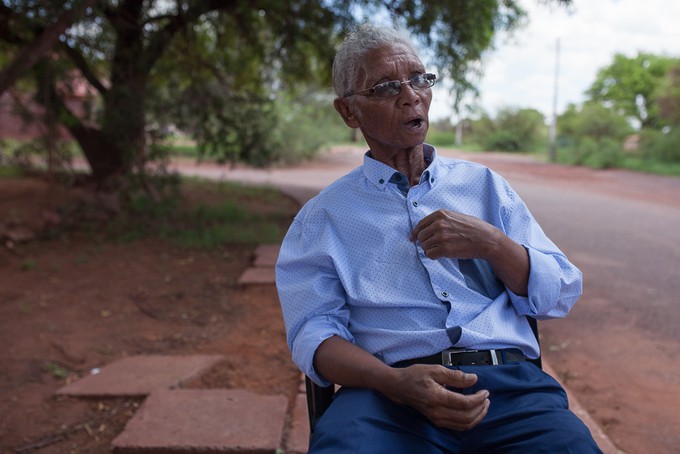
The close-knit community of Dingleton has been broken up, with most families moving to Siyathemba, central Kathu or other Northern Cape towns. Most of those who agreed to move to Siyathemba received a new home, as well as a once-off inconvenience payment and a setup allowance totalling about R30,000. Kumba has also promised to subsidise the increase in municipal taxes for about 20 years.
The 25 families still in Dingleton are refusing to move on Kumba’s terms, and are demanding more compensation for their homes.
“It was never about using this opportunity to get rich”
Melvin Lang, 27, who moved to Dingleton when he was a toddler, says that Dingleton thrived not with the help of Kumba, but in spite of it. “The mine was developing communities around us. All those years they were using the excuse that Dingleton cannot be developed because eventually they will mine in the area,” says Lang.
His widowed mother Maria, who owns the Langs’ home in Dingleton, says that in 2004 she was “so thrilled” that the mine promised them work for their children, compensation, and new houses. In 2013 Maria signed a contract agreeing to move to Siyathemba.
When Melvin saw the agreement he was worried as there was no mention of financial compensation. But he says that the lawyer working for the community reassured him that his mother could cancel the contract and that this was not the final agreement.
As the years continued, Melvin grew more concerned and in 2015 he attempted to formally cancel the agreement. “For me it was never about using this opportunity to get rich, but [rather] for my mother to be better off,” says Melvin.
In November last year a representative of the mine offered Maria R2.3 million for her house but the Langs rejected this. Maria has now been summoned to the Northern Cape High Court, in an attempt to force her to comply with the original agreement.
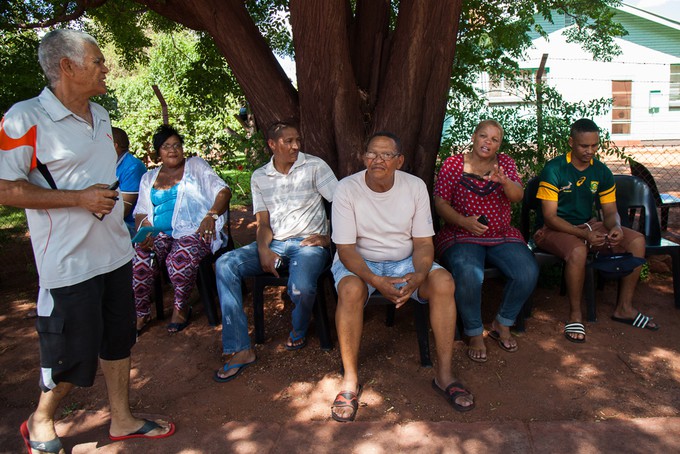
Some residents have demanded R30 million for their homes, sparking anger from those who have already moved to Siyathemba and lost out on such potential deals. 80-year-old Frederick van Neel, who has lived in Dingleton for 18 years, says his lawyer used figures supplied by Kumba to calculate this amount and the R30 million has not been disputed or corrected by Kumba. “Kumba wants everyone’s house,” he says. “But the people do not realise that they have got property. I’ve got my title deeds. This is why I decided I cannot give my property for Kumba for mahala [nothing]. Kumba has got to pay for this.”
Living in the town that has been almost abandoned and has no public transport is not easy for an elderly man without a car. But van Neel, a small quiet man who speaks in a measured tone, says he manages with lifts from his friends who transport him to Kathu.
Victor Andreas, a leading resistance figure in Dingleton, wants Kumba to make him an offer. Kumba has done prospecting in the area and “know exactly what is under the ground”, he says.
He understands that the mine is not obliged to pay residents anything for the iron ore to be mined, but he also knows that Kumba cannot force the residents to move. The only way to force them to move would be to expropriate the land. “I am willing to move. But we need to go to the table and negotiate a resettlement package. The value of my house must be part of that package. … It’s about what’s fair.”
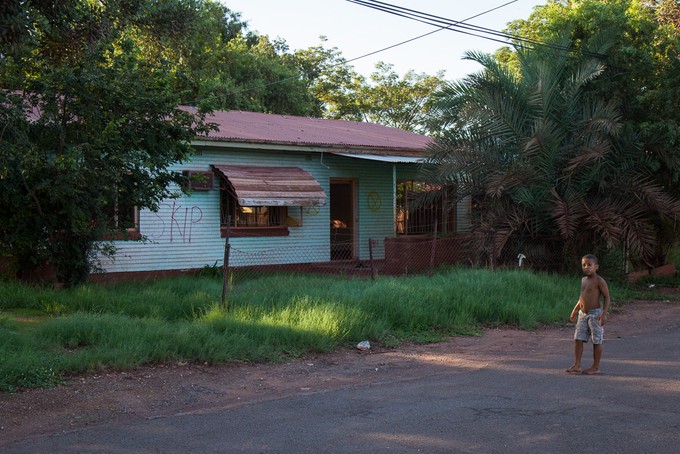
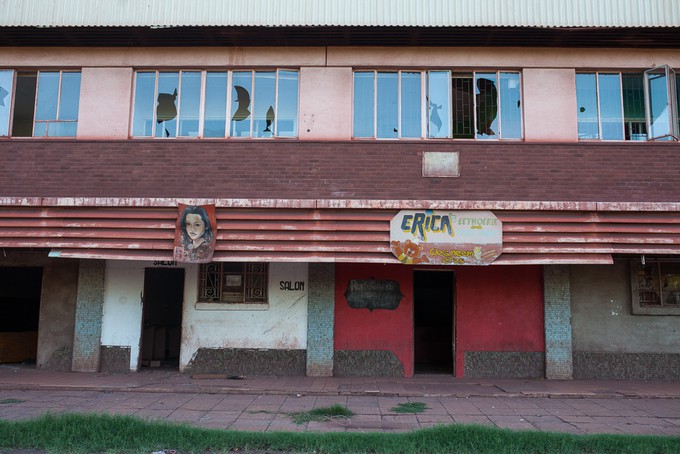
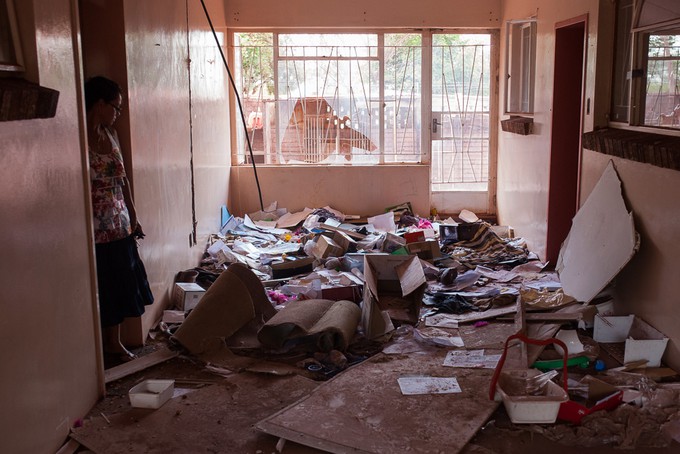
Is Kumba mining illegally?
Dingleton residents assert that Kumba is operating illegally, mining within the 500m buffer zone required by law between opencast mining and residential areas. They say this is one of the reasons why rock from recent blasting activity smashed into local houses.
But Kumba’s executive head of public affairs, Yvonne Mfolo, says the company is not mining in the buffer. She also says that when the residents eventually leave Dingleton, Kumba is “not planning to mine in the town” and actually only wants to mine in the buffer zone. Kumba says that the reason for moving the town is to “execute a long-standing and agreed plan to mine closer to and ultimately within the buffer zone – which would bring the pit shell too close to the town”.
But the residents don’t believe Kumba’s version and insist that there is iron ore beneath their homes.
Kumba’s assertion that there will be no mining in the town itself appears to be contradicted by a recent authorisation from the Department of Mineral Resources (DMR) for the mine to demolish buildings in Dingleton. “The mineral deposits underlying the area in question have already been determined by the mine through their prospecting and exploration operation. The proposed activities will entail demolition of the area to access and mine the underlying iron ore deposits,” reads the authorisation document. The “area” referred to in Kumba’s application includes the whole of Dingleton and some surrounding areas.
The authorisation also allows the mine to demolish buildings just 100m away from houses that are still occupied. Kumba is allowed to begin demolishing during the second week of February unless affected parties submit appeals.
Kumba told GroundUp that the company needed to demolish houses in Dingleton primarily “to ensure public health and safety as vacant habitations close to a mine causes a risk”.
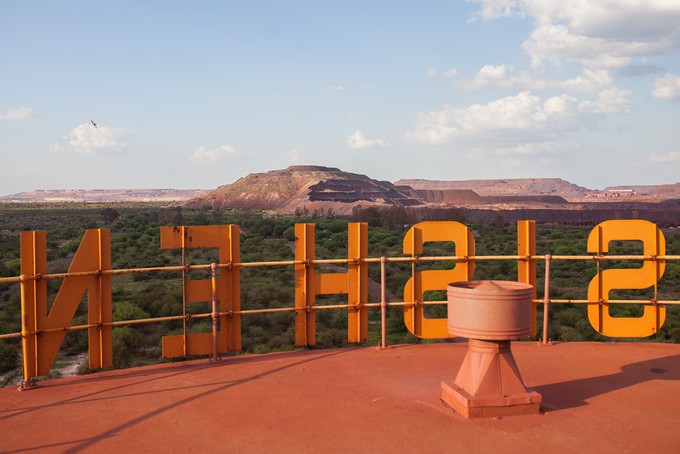
Flying rocks and sleepless nights
Jacob Rooiland says when the mine is operating at night there are “trucks, shovels and hauling”, making it impossible to sleep. When blasting occurs, it has the “effect of an earthquake” he says.
The residents use the term “blasting shock” to describe the effect that blasting has on the townspeople. “DMR has failed us,” says Rooiland. “DMR refuses to come to check whether Kumba is operating outside or inside the buffer zone.”
Waiting for the Red Ants
The families who have been most neglected during the move are those who were renting in Dingleton. Many of them claim that at the beginning of the negotiations they were promised 50m2 houses, but as the negotiations wore on, this changed. However, Kumba says that “renters were never promised the option of a replacement home but were given the option to rent property in one of the newly constructed buildings located in Siyathemba”.
Those who remain live in abandoned buildings or in the hostel, spending their days on the side of the potholed road, waiting for the Red Ants, a security company that carries out forced evictions.
Former renter Ellen van der Westhuizen says that “it is heartbreaking and the mine doesn’t care how you feel”. Like many other renters, Van der Westhuizen was offered R2,000 for six months if she found a place to rent in Kathu. “[But] after six months what can I then do? And there is no rent in Kathu for R2,000. It is from R3,000 and more.” Her concerns are echoed by other renters, like Marie Gorrah, who used the subsidy for a few months but hasn’t moved to Kathu and must now either move or repay it.
Kumba told GroundUp that it “provided a subsidy of R2,000 to renters who indicated they wanted to explore alternative options of renting property of their own choice … Subsequently some of these renters could not find alternative accommodation to their liking, and Kumba has again offered them suitable alternative accommodation.”
But renter Elizabeth de Koker says that Kumba hasn’t kept their promises. “Kumba has money. Do we have a chance to fight against such a big company?”

Support independent journalism
Donate using Payfast

Next: Sewerage water spilling out onto Port Alfred taxi rank
Previous: Don’t panic says SASSA as payout takeover deadline looms
Letters
Dear Editor
I was born and raised in Dingleton. Kumba Iron Ore has done the absolute minimum regarding the development of Dingleton's residents. Kumba do not offer us internships, bursaries (except Engineering) or graduate programs to develop the youth of Dingleton. Our community has a high unemployment rate, especially youth unemployment, which is the main cause of other social problems, like drug abuse and crime. All Kumba did was open a soup kitchen. I am disappointed to the core that such a mining giant can't even help the residents of Dingleton create a better future.
Dear Editor
I was born in Sishen, near Dingleton, in 1966. My father worked for the old South African Railways and we stayed in some rondavels the company owned. My father was one of labourers responsible for loading the iron ore on the goods trains. I remember as a little I used to stand on the platform of the then Sishen station watching those long goods wagons, according to reports the longest in the world, leaving the station heavily laden with iron ore en route to Saldanah Bay where the iron ore was to be shipped for the overseas market. Then in 1971 at age 5 we moved to a village near Kuruman, which is about 55km from Sishen. I later learned that the authorities decided to move just the families to the outskirts of Kuruman and only the men who provided cheap labour at the then ISCOR mine and the railways were allowed to stay in Sishen. My theory is that the apartheid government moved us in preparation for the introduction of the homelands system. All the villages around Kuruman were incorporated into the new 'country' except for Kuruman town itself, Kathu and Sishen. In the blink of an eye we lost our South African citizenship. I visited the place of my birth in January of last year. Dingleton is now a ghost town. I could not even recognize where Sishen town used to be, where the white people lived. Now history is repeating itself and people are being moved in pursuit of profits that enrich only a few individuals.
© 2017 GroundUp. 
This article is licensed under a Creative Commons Attribution-NoDerivatives 4.0 International License.
You may republish this article, so long as you credit the authors and GroundUp, and do not change the text. Please include a link back to the original article.

